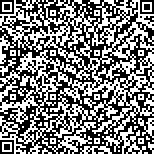| 本文已被:浏览 2850次 下载 2893次 |

码上扫一扫! |
|
|
| 珠江口颗粒附着微生物群落沿环境梯度的演替 |
|
范艳君1,2, 朱玲2, 朱伟1, 高志强1,2, 庄志猛2
|
|
1.青岛农业大学生命科学学院,青岛 266109;2.农业部海洋渔业可持续发展重点实验室 山东省渔业资源与生态环境重点实验室 中国水产科学研究院黄海水产研究所,青岛 266071
|
|
| 摘要: |
| 将PCR-DGGE技术和典范对应分析相结合,研究了珠江口水体颗粒附着微生物群落沿环境梯度的空间分布特征及其影响因素。DGGE指纹图谱分析表明,颗粒附着微生物群落沿环境梯度表现出明显的空间演替:不同站位之间既存在共同谱带,又具有各自的特征谱带;S4和S5两个站位的微生物群落结构与其相邻站位相比,DGGE指纹图谱变化明显,是颗粒附着微生物从海淡水混合区向海水区演替的中间过渡类型。对DGGE图谱中19条主带回收、测序表明,两个序列与已培养的微生物同源性≥99%,其余17条序列均与未培养的环境微生物种群具有很高的相似性(91%~100%);变形菌门和拟杆菌门是珠江口颗粒附着微生物的优势种群,其中变形菌门为绝对优势种群(78.9%)。典范对应分析显示,氮相关营养盐水平和盐度是影响水体颗粒附着微生物群落分布格局的两个主要因素。 |
| 关键词: 颗粒附着微生物 变性梯度凝胶电泳 典范对应分析 珠江口 |
| DOI: |
| 分类号: |
| 基金项目:国家自然科学基金项目(40776090;40976073) |
|
| Succession of particle-attached bacterial community structure along environmental gradient in the Pear River Esturary |
|
|
| Abstract: |
| Community structure and spatial distribution of the particle-attached bacteria along environmental gradient in the Pear River Esturary, as well the influencing factors, were studied by PCR-DGGE and canonical correspondence analysis. The DGGE profiles showed significant spacial succession of the particle-attached bacteria along environmental gradient. Some bands from DGGE gel were shared by two or more stations, while the others belonged to the special station. The bacterial communities in S4 and S5, differed significantly from those in adjacent stations, with transitional form from the freshwater-seawater mixing zone to seawater zone. Sequence analysis of nineteen major bands from DGGE profiles revealed that two sequences were highly similar to those of the cultured bacteria (≥99%), and the others were similar to those of the uncultured bacteria (91%~100%). Proteobacteria and bacteroidetes were dominant populations in all stations, particularly proteobacteria (78.9%). Canonical correspondence analysis indicated that nitrogen nutrient and salinity were the major contributing parameters for the spatial distribution of the particle-attached bacterial community structure in the Pear River Esturary. |
| Key words: Particle attached bacteria Denaturing gradient gel electrophoresis (DGGE) Canonical correspondence analysis Pear River Esturary |